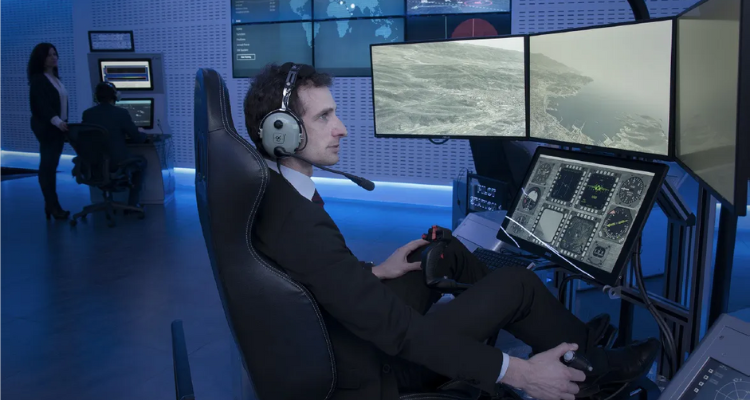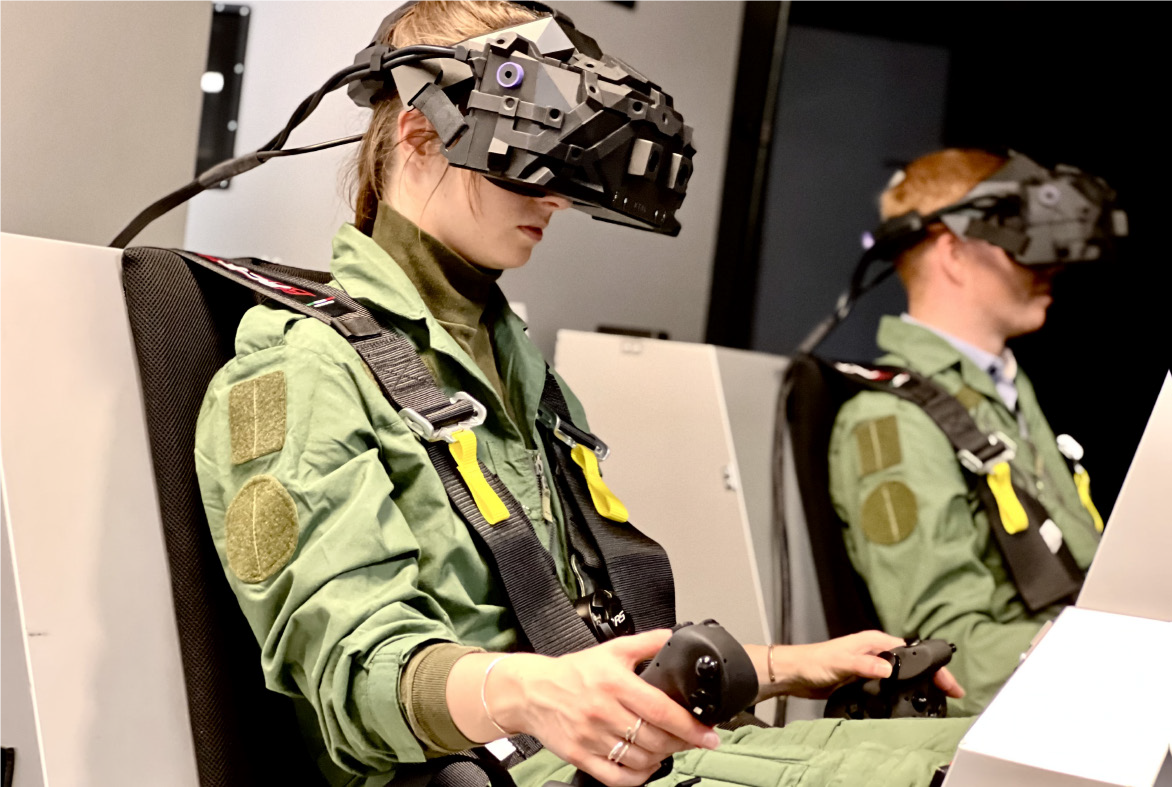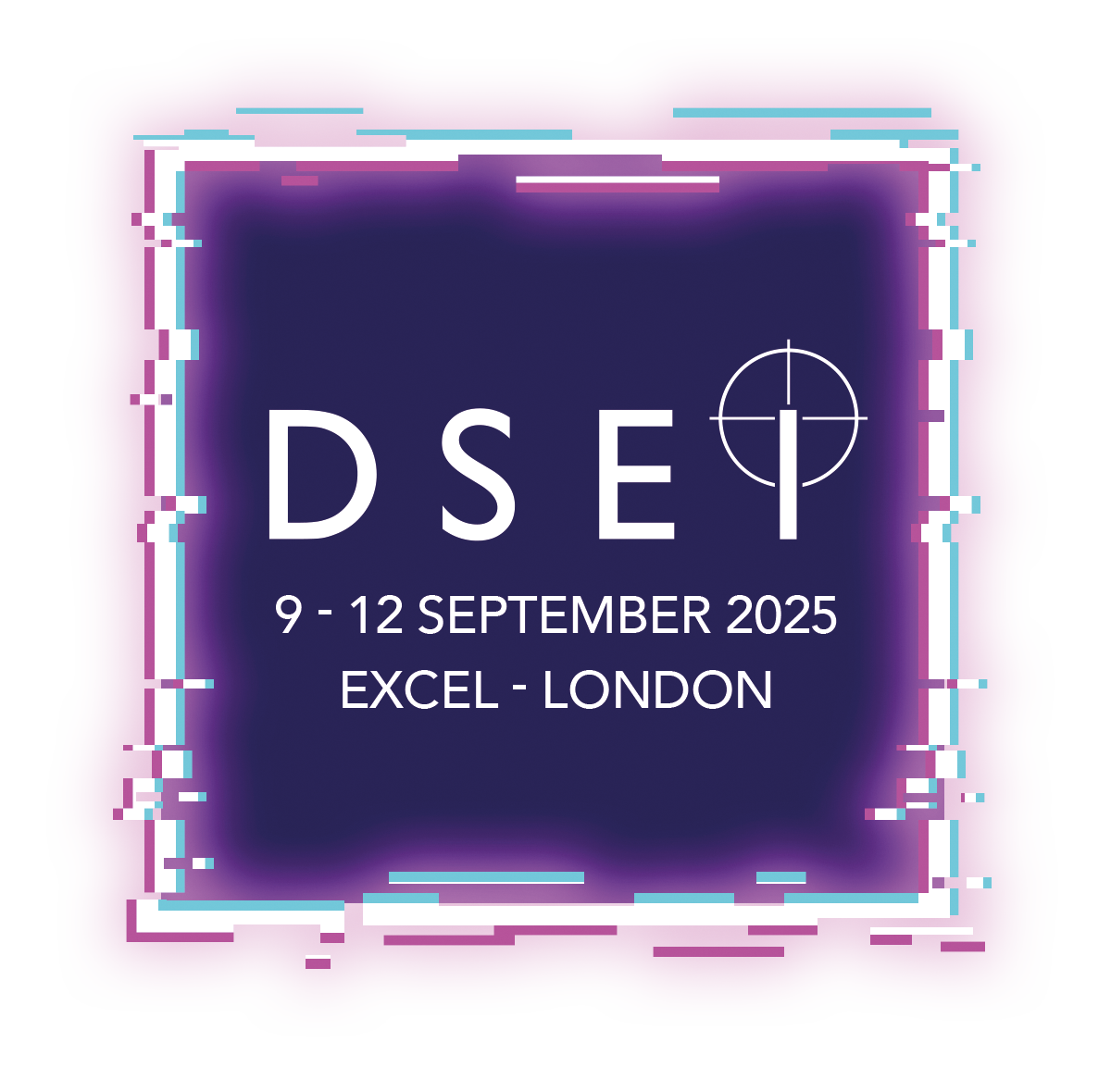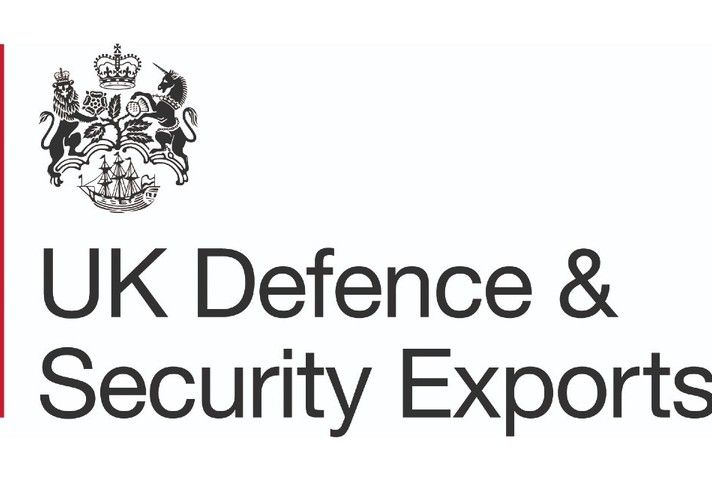What is a Synthetic Training Environment?
- News Article
- Space

WHAT IS A SYNTHETIC TRAINING ENVIRONMENT?
Training is the backbone of military forces around the world. Without high-quality systems, military personnel risk being short of skills, theory, and readiness they need to perform their roles. Today’s defence landscape is constantly changing in the face of geopolitical power shifts, economic challenges, and advancing technology – all of them factors that can help or hinder both allies and opponents in any given scenario. Synthetic Training Environments (STE) address many of the shortfalls in traditional military training by introducing a new level of realism, helping trainees better engage with their education and absorb the concepts therein.
WHAT IS A SYNTHETIC TRAINING ENVIRONMENT?
At its core, a Synthetic Training Environment (STE) aims to enhance live with virtual training to create hybrid exercises that are accessible and repeatable, yet closer than ever to ‘the real thing’. The STE combine and make use of virtual reality (VR), augmented reality (AR), Mixed Reality (MR) and Artificial Intelligence (AI) as well as emerging and developing technologies to create rich virtual environments that can be bolstered by real-world assets.
The STE also leverages commercial off-the-shelf (COTS) and government off-the-shelf (GOTS) software and hardware. It will provide immersive and semi-immersive training capability in support of multi-domain and joint operations. By bringing aspects of live exercises to virtualised training - for example, real equipment and physical environments - participants are given tangible ways to interact with simulation, immersing them within a synthetic world.
The United States Army is aiming to develop a single training environment which will be shared by its soldiers and is accessible from anywhere in the world. Such a platform would enable coordinated, multi-domain training from separate locations and transform military training, planning and decision support.
Despite the physical separation of participants, each would train symmetrically under one scenario and have equal opportunity to acquire the same level of warfighting skills. With the appropriate cooperation, this could mean allies on separate sides of the globe training together.
WHY HAVE SYNTHETIC TRAINING ENVIRONMENTS BEEN DEVELOPED?
The defence sector operates in an increasingly complex content. Large nations grow more powerful and influential, seeking to shift the balance of geopolitical power. Nationalist sentiment has grown more widespread over the past couple of decades, driving some actors to develop their military technology and their offensive and defensive capabilities. STE not only answer a need for more effective training with a high degree of accessibility, but it also grants an asymmetric advantage for nations that develop rich synthetic training programs. Seeing the immersive capabilities of VR, AR and MR - albeit for purposes that, currently, chiefly encompass entertainment and gaming - there is a clear use for more practical applications in warfighting, platforms and piloting skills to identify a few. Many areas of military and combat operations take particular advantages from synthetic training. For instance, the exercises necessary to train pilots are, by their nature, logistically intensive and expensive. Nevertheless, they are essential for pilots who are responsive and knowledgeable in manoeuvres, as well as coordinated when flying alongside others. The high speeds and tight control allowances of flying aren’t the only high stakes for which synthetic training environments can take some of the burden.

BENEFITS FOR MILITARY TRAINING IN A SYNTHETIC ENVIRONMENT
It’s no secret that training for the defence sector means some degree of preparing for life and death scenarios. Current training can bring personnel close to that, but there is a barrier at which real world training inevitably arrives; there is only so much readiness that can be taught before it’s relied upon in live combat operations. At the same time, training has to remain safe and removed from true risk. After all, you can’t place your trainees in all the same dangers that they would face when confronted by the real thing. And why would you?
Synthetic training provides a level of safety in training scenarios akin to sitting in a classroom environment, while also presenting a realistic and immersive space that doesn’t sacrifice the context of its removed sense of safety.
Many roles and specialisations working within armed forces can directly benefit from simulations for safe and repeatable training, including:
Explosive Ordnance Disposal (EOD) and Search - to learn the essential Sapper skills needed to deal with explosive ordnance
Infantry soldiers - to practice combat formations, tactics, weapons training, combat, and more
Vehicle drivers and tank crews - to familiarise with vehicle control and interfaces
Port operators - to learn systems and procedures necessary for smooth port control and disaster relief
Pilots - to learn aircraft systems and control and manoeuvres and hone response times
Vehicle mechanics - to practice vehicle repairs and learn the layout of vehicle components from anywhere
Gunner and artillery command - to practice procedure, disciplines, accuracy, and logistical demands
Communications operators - to learn and practice using various voice and data communication systems
Call For Fire - to drill the complex discipline of calling for fire support and honing accuracy
For the training of military personnel like pilots, the efficacy of flight training in simulated environments has been shown. Not only is it effective at teaching vital flight skills and preparedness to trainees, but it also saves the heavy costs and logistical demands involved with traditional flight training. Organisations like the RAF face chronic issues with pilot training, largely due to cost-saving cuts reducing the available budget for training new recruits. As a result, the available pool of talent has shrunk, and those that are earmarked for training are left waiting for available slots on courses or for available instructors.
These challenges can be downsized - perhaps eliminated altogether - by incorporating simulation based that are able to guide trainees through courses and can be repeated time and again. The cost-saving element of simulated training also frees up the budget demands of traditional training, allowing defence forces to navigate tougher financial periods. Simulated training can also provide a more realistic training environment for high-stakes roles like bomb disposal, and for more complex and strategic positions like forward observers in Call For Fire systems.
CHALLENGES OF MILITARY TRAINING IN SNYTHETIC TRAINING ENVIRONMENTS
There are some areas of military training that cannot be completely supplanted by synthetic training environments. Combat encounters are complex, and often rely on reading the subtleties of body language and sensory information. The use of VR and simulation could inadvertently remove the reality of these situations from training, and they should be used as supporting resources rather than a wholesale replacement in such situations. Another challenge to the adoption of synthetic training is that of integration and ensuring that the architecture of modern simulation tech can interoperate with older legacy systems. For military forces with less funding and access to modern equipment, this can be more of a challenge. This additionally relates to challenges in cooperation between allies, as one part of a coalition may not be able to access or interoperate with the same systems as another. This may mean the need to invest not only in a nation’s own simulation capabilities, but that of its neighbours and allies too.

CONCLUSION
The defence sector always faces challenges that lie waiting tomorrow. The question is not how to avoid or lessen these, but rather how to face and prepare for them in good time. As cost, time, and logistics require a constant balancing act, synthetic training environments can lighten the load and relieve some of the mounting pressure on our military forces. ST Engineering Antycip is Europe’s leading COTS provider for simulation, training and solutions for defence and military, acting as a supplier and integrator of robust simulation hardware, software, and services.
SEE THE FUTURE OUR VISION
Our goal, for over twenty years, now and for the future, is to bring the latest technology for virtual reality, simulation and visual displays to our customers, and to work with them through close supportive partnership-based projects.
At our heart, we are an award-winning team of enthusiastic experts with leading-edge technologies from a collection of exceptional manufacturing partners. We combine these elements to bring you the best solutions, helping you implement them every step of the way.
With teams in the UK, Italy and France, ST Engineering Antycip (formerly Antycip Simulation) work with many pre-eminent players in various sectors – from leading universities to winning sports teams, to multinational defence contractors, to noted engineering companies, to premier car manufacturers – helping them to improve at what they do.
And while technology and challenges move on, our passion to continuously use the latest tech to help address our customers newest challenges will never cease.
-
Understanding space: DSEI and UK Space Command
01 Sep 2023 John HillIn March this year, the European Space Agency (ESA) stressed the importance of space as a disruptive force in society and defence in its space strategy report, ‘Revolution Space’. “Countries… that wi ... -
Restoring and Increasing Delivery Confidence in Government Major Programme Delivery
13 Jul 2023 Ben Lolley, Jamie Leich, Tony Reeves, Lewis FeilderGovernment Major Programmes and Risk The last nine years has seen Government Major Projects Portfolio (GMPP) spending grow to an astounding £678 billion. Despite significant investments in delivery ca ... -
Reimagining Skills for Space
13 Jul 2023 Jan Morgan, Lewis Feilder, Tony ReevesA comprehensive space education can make Global Britain the world seminary for space Space offers huge prospects for economic growth and solutions on everything from climate change to food security. T ... -
Here’s How the U.S Government Solves Access, Security and Space Problems Simultaneously
21 Jun 2023 Karlene BergerHERE'S HOW THE U.S GOVERNMENT SOLVES ACCESS, SECURITY AND SPACE PROBLEMS SIMULTANEOUSLY Networking and IT professionals face problems with limitations of physical infrastructure. Space. Cabling multip ... -
The Increasing Threat Landscape & the need for Defense-Grade Cybersecurity Solutions
24 May 2023 Joanna CrossleyTHE INCREASING THREAT LANDSCAPE & THE NEED FOR DEFENSE-GRADE CYBERSECURITY SOLUTIONS In today's interconnected world, the threat landscape for cybersecurity is expanding at an alarming rate. Cybercrim ... -
Vessel Detection: Reliable Vessel Detection, Day or Night, Independent of Cloud Cover
21 Jun 2023 Capella SpaceVESSEL DETECTION: RELIABLE VESSEL DETECTION, DAY OR NIGHT, INDEPENDENT OF CLOUD COVER Capella Space offers vessel detection as an enrichment to our very high resolution (VHR) image tasking service for ...

)
)
)
)
)
)

